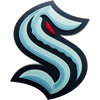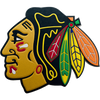Get Chicago Sports
Compare Plans
Connect TV Provider
Access With Your TV Credentials

 Kraken
Kraken Blackhawks
Blackhawks Kraken
Kraken Blackhawks
Blackhawks
 Kraken
Kraken Blackhawks
Blackhawks
 Kraken
Kraken Blackhawks
Blackhawks
 Kraken
Kraken Blackhawks
Blackhawks
 Kraken
Kraken Blackhawks
Blackhawks
 Kraken
Kraken Blackhawks
Blackhawks
 Kraken
Kraken Blackhawks
Blackhawks
 Kraken
Kraken Blackhawks
BlackhawksFull Schedule
11/22
12:00 am
CHSN
11/22
1:00 am
CHSN+
11/23
1:00 am
CHSN
11/24
12:00 am
CHSN
11/25
1:00 am
CHSN
11/29
12:30 am
CHSN+
11/29
1:00 am
CHSN
11/30
12:30 am
CHSN
11/30
8:30 pm
CHSN
12/4
1:00 am
CHSN
12/6
1:00 am
CHSN
12/7
2:00 am
CHSN
12/8
12:00 am
CHSN
12/8
1:00 am
CHSN+
12/14
1:00 am
CHSN
12/17
12:00 am
CHSN
12/18
1:00 am
CHSN
12/19
12:00 am
CHSN
12/20
12:30 am
CHSN
12/20
8:00 pm
CHSN
12/21
8:30 pm
CHSN
12/24
12:30 am
CHSN
12/27
1:00 am
CHSN
12/28
1:00 am
CHSN
12/28
1:00 am
CHSN+
12/29
12:00 am
CHSN
12/30
1:00 am
CHSN
12/31
1:30 am
CHSN
1/1
12:00 am
CHSN
1/2
1:30 am
CHSN
1/3
1:00 am
CHSN
1/4
12:00 am
CHSN
1/4
1:00 am
CHSN
1/5
12:00 am
CHSN
1/6
12:30 am
CHSN
1/8
12:00 am
CHSN
1/9
1:00 am
CHSN
1/10
1:00 am
CHSN
1/11
1:00 am
CHSN+
1/11
1:00 am
CHSN
1/13
1:30 am
CHSN
1/14
1:00 am
CHSN
1/15
1:00 am
CHSN
1/16
1:30 am
CHSN
1/17
12:00 am
CHSN/ESPN
1/18
1:00 am
CHSN
1/19
12:00 am
CHSN
1/20
1:30 am
CHSN
1/21
1:00 am
CHSN
